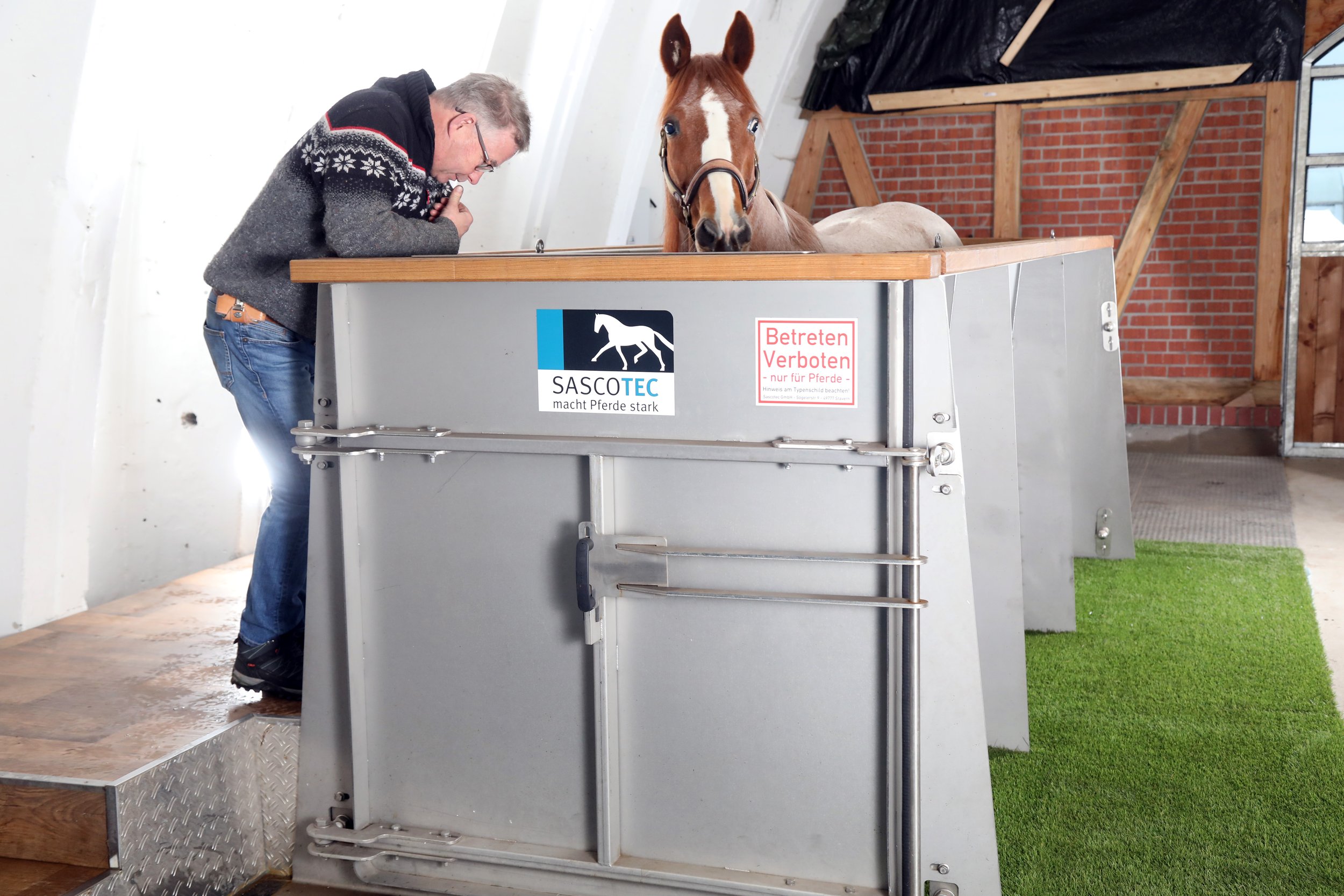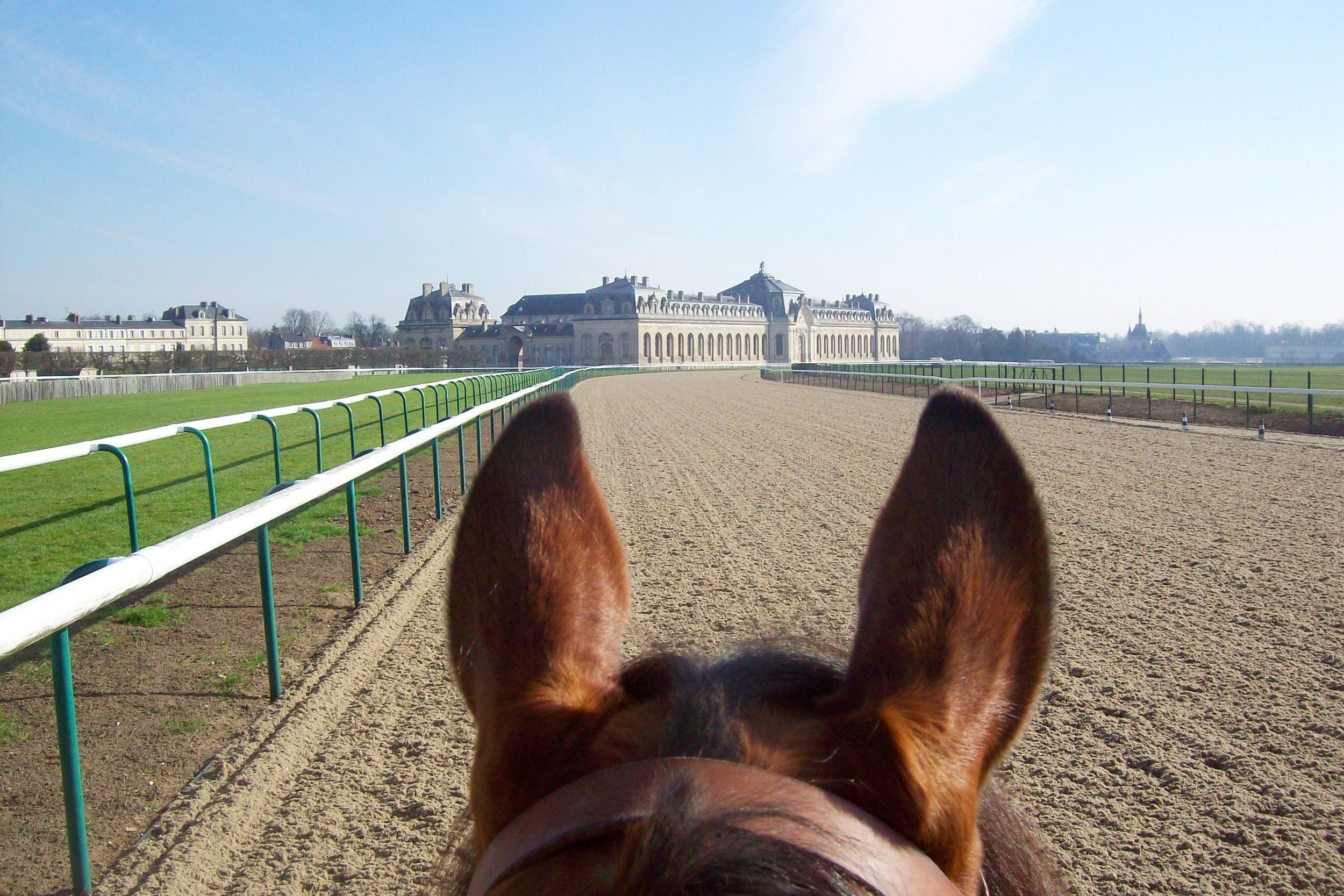Water treadmills – what can they offer our racehorses?
/By Carolyne Tranquille, Dr Kathryn Nankervis & Dr Rachel Murray
Issue 71 of European Trainer (January - March 2021) included an article titled “Understanding hydrotherapy and the benefits of water-based conditioning.” In this issue, we examine the best practices for using water treadmills as part of a training programme.
Water treadmill (WT) exercise is increasingly being used as a routine part of the training of sport horses and now racehorses. However, the research detailing their effects on our equine athletes has only emerged in the last 5-10 years. A WT allows the trainer to provide a pre-determined, very precisely controlled piece of work for the horse. With the addition of water, we can then overlay this most basic piece of work with additional tools due to the properties of water itself: drag and buoyancy. The combined effect of these two forces can yield movement patterns for our horses that are beneficial in supporting training programmes. The million-dollar question then is, how exactly do you select depth and speed of belt to achieve what you want within a training programme?
Contrary to popular belief, heart rates of horses walking in water are not necessarily increased as water levels rise, with horses merely adapting their gait pattern to accommodate for increased drag. Indeed, WT exercise never elicits heart rates of over 120-140 beats/min nor does it elevate blood lactate levels, even when carrying out what might be considered to be the ‘hardest’ type of exercise which is trotting in high water. So, the benefits of this modality clearly aren’t in its ability to act as a substitute for fast work; its benefits are in the responses it can bring about in the horses’ movement pattern and the consequent muscle adaptation that can be provided when horses use it on a regular basis.
In 2019, an international equine hydrotherapy working group produced a WT user guideline document. The following sections highlight the recommendations from the group to obtain the best out of a WT exercise session for our racehorses.
General best practice in water treadmill exercise
Follow manufacturer guidelines for correct machine operation, water care and cleaning of the machine; and seek help from an experienced user to supplement the initial training received by the manufacturer.
Handlers should wear personal protective equipment (e.g., hard hat and gloves) during a WT session, and two handlers should be present.
Horse loading and unloading procedures should be specific to the make and model of the machine, and the environment in which the treadmill is located, with procedures devised to avoid the handlers being directly in front or behind the horse. Loading and unloading of naïve horses seems to present the greatest risk to the handlers.
To help keep the water clean, the horse should be brushed and/or hosed off to remove superficial dirt, the feet are picked out and the tail wrapped.
WT exercise should be avoided for horses with any skin lesions, cuts or abrasions that might be below the water level or for a horse that had received a distal limb joint injection within four days.
If the horse is shod, the shoes should be secure. Shoes with road nails could damage the belt, and large extensions which may affect the flight of the foot in water should be avoided.
Horses can be worked on a WT in a headcollar, chifney or bridle, provided the natural movement of the head and neck are not restricted.
Leg protections should be avoided.
Once the session is complete, the horse should be hosed and dried off, especially the feet, to avoid foot problems.
Introducing horses to the exercise
Horses habituate to WT exercise more readily if they are given several short sessions (up to 15 minutes) on consecutive days.
Sufficient time should be allocated to avoid rushing the horse and ensuring he has a positive experience. The horse can be prepared for the belt moving by asking him to step back and forth a few times; then start the belt as the horse takes a step forward.
The water depth should be increased with each session, provided the horse remains relaxed. Water should be kept at fetlock depth during the first session.
If a light amount of sedation is going to be used for the first session, this should only be done under the direction of a veterinary surgeon.
Horses are considered habituated once a relaxed and rhythmical gait is reached.
Correct posture and movement patterns during water treadmill exercise
What is the correct posture, and how should a horse move during WT exercise?
The horse should be in line with the treadmill and not leaning or rolling from side-to-side.
The horse should be able to move its head, neck and forelimbs without being obstructed by the front of the treadmill.
The horse should be able to maintain position in the middle of the belt without falling to the back.
The horse’s face should be just in front of the vertical.
The head and neck should be largely still.
The horse should have a rounded lumbar spine.
The horse should be ‘pushing’ from the hindquarters.
A regular rhythm to the footfalls should be heard.
What should a horse not look like and not move during WT exercise?
The horse’s face should not approach the horizontal.
There should not be excessive movement of the head and neck (the chicken walk).
There should not be extension of the thoracic and lumbar spine.
The horse should not ‘pull’ from the forehand.
An irregular rhythm to the footfalls should not be heard during a WT session.
Factors influencing selection of speed, water depth and duration of exercise
Speed should decrease as water depth increases.
Walking more slowly than overland is recommended.
Belt speed should be horse-specific, and a suitable speed for the horse should be found before water is introduced into the chamber.
The horse should work in a correct posture (as discussed above).
The benefits of WT exercise can be achieved without trotting. To ensure safety of horse and handler, horses should only trot in the WT once they are confidently walking at various water heights.
Water depth should be training or rehabilitation goal-specific.
The best combination of speed and water depth will vary between horses and should be judged according to the individual horse’s response.
Individual horse fitness, stride length, joint range of movement and capability may change during an individual session or over multiple sessions.
It is important to monitor movement patterns closely and to observe the horse throughout the session and how movement alters in response to changes in speed or water depth and whether these changes are indicative of fatigue. This is relevant at any given water depth.
Benefits of water treadmill exercise for racehorses
Reduction of impact shock
Increased muscle development of the hindquarters
Increased joint range of motion of the limbs and the back
Increased hindlimb range of motion
Controlled straight line exercise without the added weight of the rider
Improved aerobic capacity
Conclusions
This article summaries the best practice for WT use based on the recommendations of the Equine Hydrotherapy Working Group and the Water Treadmill User Guidelines. WT exercise has many potential benefits if the correct protocols are used, and if the horse is in a correct posture and moving optimally when on the WT. Monitoring horse posture and movement patterns throughout the session are essential to assess whether or not the horse is working optimally. The final published guidelines can be found here: tinyurl.com/water-treadmills









